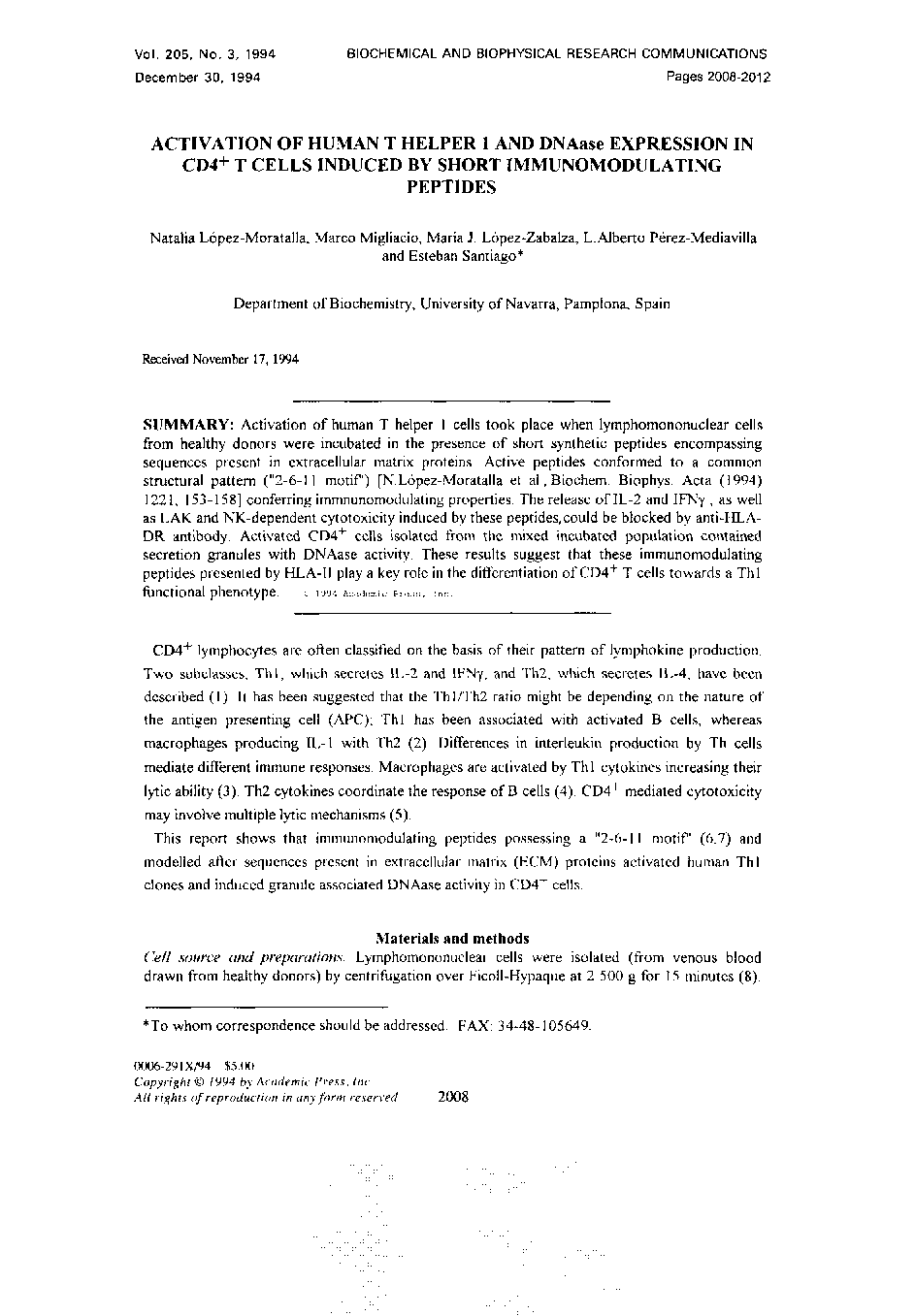| Article ID | Journal | Published Year | Pages | File Type |
|---|---|---|---|---|
| 1941439 | Biochemical and Biophysical Research Communications | 2012 | 5 Pages |
Abstract
Activation of human T helper 1 cells took place when lymphomononuclear cells from healthy donors were incubated in the presence of short synthetic peptides encompassing sequences present in extracellular matrix proteins. Active peptides conformed to a common structural pattern ("2-6-11 motif") [N.López-Moratalla et al., Biochem. Biophys. Acta (1994) 1221, 153-158] conferring immnunomodulating properties. The release of IL-2 and IFNγ, as well as LAK and NK-dependent cytotoxicity induced by these peptides, could be blocked by anti-HLA-DR antibody. Activated CD4+ cells isolated from the mixed incubated population contained secretion granules with DNAase activity. These results suggest that these immunomodulating peptides presented by HLA-II play a key role in the differentiation of CD4+ T cells towards a Th1 functional phenotype.
Related Topics
Life Sciences
Biochemistry, Genetics and Molecular Biology
Biochemistry
Authors
Lopezmoratalla N., Migliacio M., Lopezzabalza M.J., Perezmediavilla L.A., Santiago E.,
